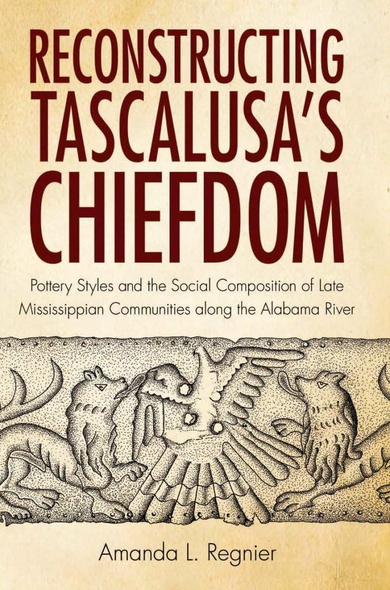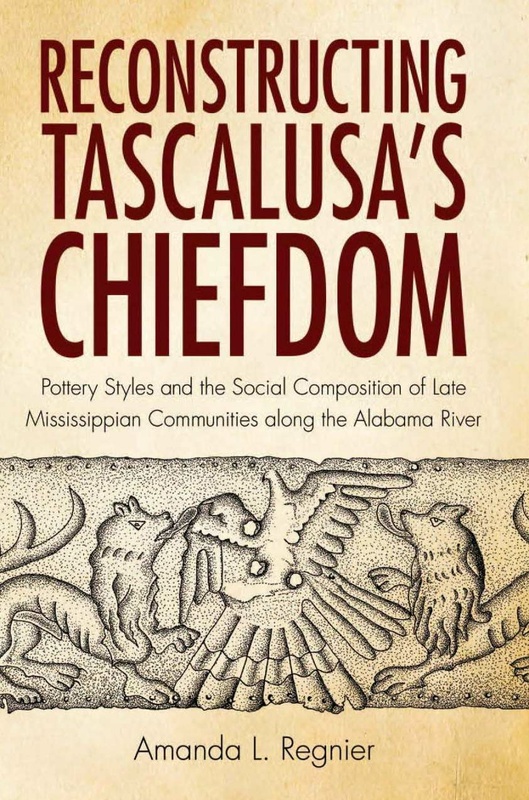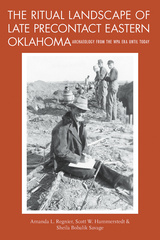Reconstructing Tascalusa's Chiefdom
Pottery Styles and the Social Composition of Late Mississippian Communities along the Alabama River
University of Alabama Press
Reconstructing Tascalusa’s Chiefdom is an archaeological study of political collapse in the Alabama River Valley following the Hernando de Soto expedition.
To explain the cultural and political disruptions caused by Hernando de Soto's exploration deep into north America, Amanda L. Regnier presents an innovative analysis of ceramics and theory of cultural exchange. She argues that culture consists of a series of interconnected models governing proper behavior that are shared across the belief systems of communities and individuals. Historic cognitive models derived from ceramic data via cluster and correspondence analysis can effectively be used to examine these models and explain cultural exchange.
The results of Regnier's work demonstrate that the Alabama River Valley was settled by populations migrating from three different regions during the late fifteenth century. The mixture of ceramic models associated with these traditions at Late Mississippian sites suggests that these newly founded towns, controlled by Tascalusa, comprised ethnically and linguistically diverse populations. Perhaps most significantly, Tascalusa's chiefdom appears to be a precontact example of a coalescent society that emerged after populations migrated from the deteriorating Mississippian chiefdoms into a new region.
A summary of excavations at Late Mississippian sites also includes the first published chronology of the Alabama River from approximately AD 900 to 1600.
Reconstructing Tascalusa’s Chiefdom contains nothing less than a social history of the late prehistoric and protohistoric Alabama River Valley. There is nothing like it in the archaeological literature of southeastern North America. The reformulations that arose from the old Mississippian social order, the new towns and polities that appeared in the wake of Spanish entradas, have never been studied with such understanding.' — Gregory Waselkov, author of A Conquering Spirit: Fort Mims and the Redstick War of 1813–1814
In ReconstructingTascalusa’s Chiefdom, Regnier takes an innovative approach towards understanding the development of multiethnic Native American towns in central Alabama during the 1400s and 1500s. The book makes very important and valuable statements about archaeological sites and artifact assemblages from the Alabama River Valley that deserve careful consideration by specialists in the archaeology of the American South.’— Christopher Rodning, author of Center Places and Cherokee Towns: Archaeological Perspectives on Native American Architecture and Landscape in the Southern Appalachians
Amanda L. Regnier is a research archaeologist with the Oklahoma Archeological Survey at the University of Oklahoma. Her research interests include archaeology of the Late Mississippian and Protohistoric periods in central Alabama, prehistoric Caddo sites in southeast Oklahoma, and removal-period Indian sites in eastern Oklahoma.
Contents
List of Illustrations
Acknowledgments
1. The Problem of Tascalusa’s Chiefdom
2. The Alabama River Valley from A.D. 900 to 1560
3. Archaeology at Late Mississippian Communities in the Alabama River Valley
4. Late Mississippian Pottery in the Alabama River Valley
5. A New Picture of the Tascalusa Chiefdom before and after Contact
References
Index






